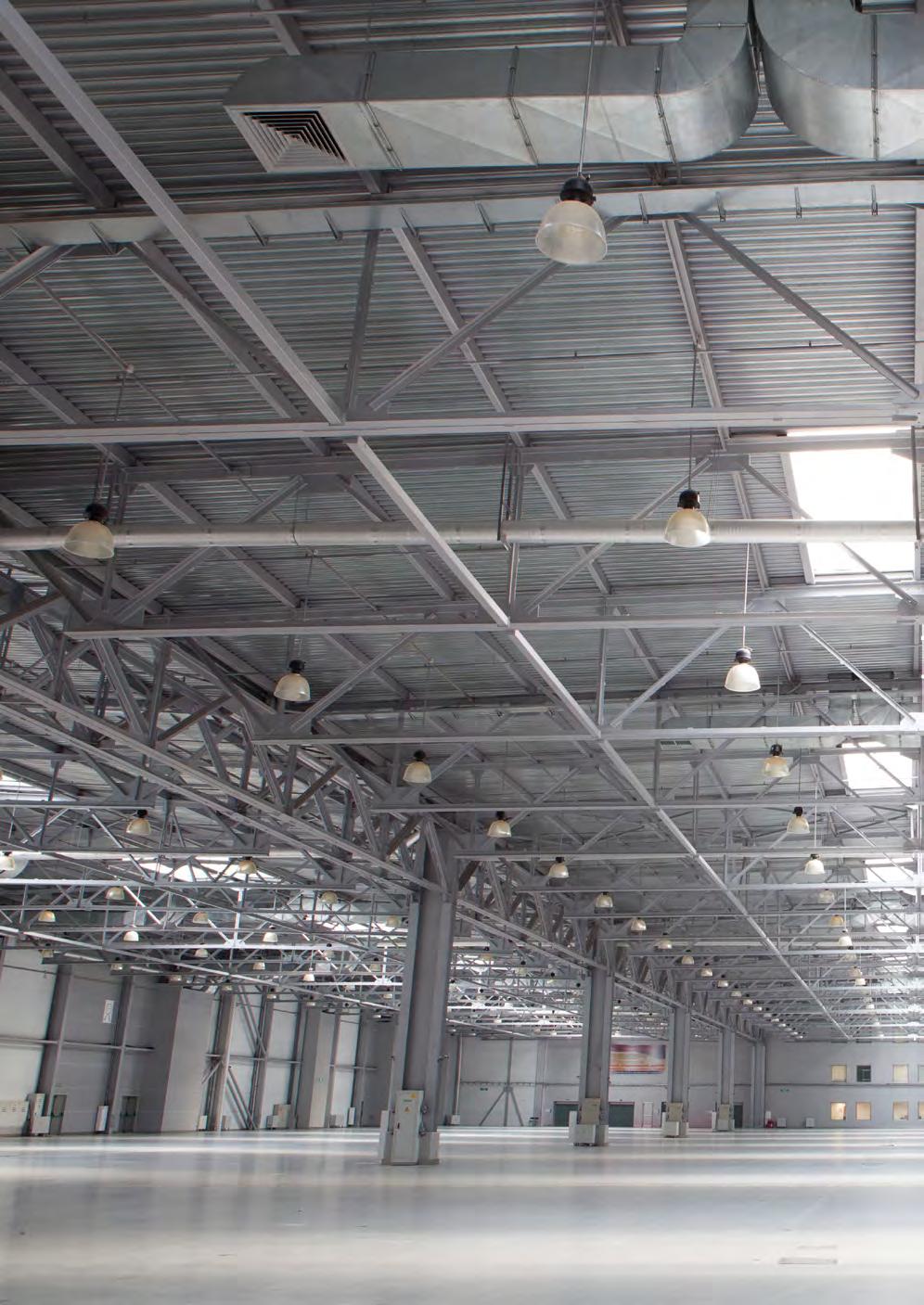
4 minute read
INTERVIEW
Warehousing Infrastructure
Bringing Efficiency, Speed, Productivity and Sustainable Development
Advertisement
The logistics infrastructure has evolved on the back of Retail & E-Commerce growth. It is now time for Big Box and Mega Box to be embraced by other industry verticals. Occupiers are showing a marked preference for Grade A sustainable properties due to inherent operational efficiencies, adherence to safety standards and better contingency planning for global events. Our panel discussion on Warehousing Infrastructure unveiled interesting insights on the changing paradigms of warehousing infrastructure in the country and brought forth the opportunities that developers and occupiers in unison can leverage to develop state-ofthe-art warehouses and harness tangible gains. While the road to success seems long and complex, the initial steps are already proving worthwhile for the segment’s all-encompassing development and the government’s recent policy measures and the concerned thrust on bringing standardisation is further amplifying the speed of development. Here’s a special report that translates the India Growth Story on the back of a Sound Warehousing Infrastructure…

OVER the years, the warehousing industry in India has evolved from storage space to highly sophisticated warehousing and logistics systems. Buoyed by the e-commerce sector and the expansion of the Indian manufacturing industry, the Indian warehousing segment emerged as one of the most attractive investment propositions for institutional investors in 2021, at a time when the Indian real estate market was facing challenges due to the persistence of the pandemic.
A Knight Frank report revealed that the investments in logistics and industrial segments witnessed a robust growth in 2021 on the back of strong demand for this asset class supported by rise in automation, and increased demand led by third-party logistics. The annual investment volume increased by 55% YoY to US$1.3 bn compared to US$848 mn received in 2020.
This transformation has resulted in the increase in average size of Grade A warehouse by 2x and volume by 3x in India. According to JLL India research, the warehouse real estate market in India is witnessing a steady growth and expansion from ~170 mn sqft. in 2018 to 307 mn sqft in H1 2022 and this is likely to continue in the upcoming years. The Grade A share in the stock has also increased from 39% in 2018 to 48% in H1 2022 showing increased interest from developers and institutional investors for quality spaces with higher storage handling capacity as well as shift in occupiers’ preference towards compliant spaces. The warehousing market is expected to record the highest ever absorption this year. The report states that the net absorption in 2022 will grow to a record 42.5 million sqft. – up 17% from the pre-Covid highs of 36.3 million sqft. in 2019. Remarkably, the sector has established itself as one of the most resilient asset classes.
In addition to the increase in quality warehouse spaces, there have been other notable trends in the Indian warehousing market: • Increase in global investors in India’s evolving logistics and industrial sector • Warehousing demand from 3PL
and e-commerce sectors shifting towards larger storage space with advancement of technology and automation • Urban logistics sector emerging as attractive sector in tier I cities as the market is shifting towards ondemand solutions • Omni-channel retailing transforming traditional warehousing into fulfillment centers with higher optimisation.
The strong institutional interest in logistics, warehousing development and operations in recent years has transformed the sector from being just a large storage space into a facility with value addition in terms of inventory management, packaging, product extraction, etc. This transformation is happening on the back of advancing technology and automation infrastructure, focus on efficient last-mile deliveries, resulting in a growing demand for urban logistics, the rise of omni-channel retailing, etc. Furthermore, India’s position in various indices has improved from the previous years due to various initiatives by the Government such as Make in India, Digital India, infrastructure upgrades as well as rising skilled professionals under Skill India campaign.
Talking about the changing warehousing infrastructure paradigms,
Arif Siddiqui, Founder & Director,
Coign Consulting, elaborated, “It's been very inspiring to witness the pace at which our country is growing and especially not only because of the pandemic but I think overall we had already seen an acceleration in the overall economy in the country and not only acceleration by spend but acceleration by manufacturing, acceleration by the supply chain and the way supply chain has evolved over the years, thanks to all the great supply chain leaders – the transport managers, the warehouse managers, the warehouse executives and the IT support system who has been a bedrock to this entire supply chain evolution. To me, the pandemic was only a way to show our CEOs our CFOs, what supply chain managers actually are capable of doing. We've been able to make a very strong position and a very strong case of the department and the importance of the department especially when it comes to connecting customers.”
He adds, “Infrastructure plays an equally important role in the overall delivery experience to the customer and here I'm not talking about delivery experience only from an e-commerce point of view, it could be a B2B or B2C or D2C. The warehousing and distribution infrastructure has evolved over time on the back of especially the industrial and the retail or e-commerce growth that we have seen in the past 10 years wherein customers are served while riding on the B2B and the B2C channel. Retail and e-commerce have been the catalyst to the development of the new






